Ghent aims to be a climate neutral city in 2050. This target not only applies to the city level but also to the districts around the city centre. In one specific neighbourhood called Dampoort Sint-Amandsberg, the city has launched a pilot study to investigate the path towards becoming a climate neutral district.
A baseline emission inventory (BEI) of the district was made based on the energy consumption in the district.
The data was released for this study by STEP UP partners and distribution system operator Eandis. From this data, 80% of the electricity and gas use in the district was mapped, i.e. energy consumption was linked to the specific physical gas and electricity consumption points of the grid in a Geographic Information System (GIS). For the other 20%, an upward-adjustment of the estimate was made. This was carried out also for the consumption of fuel oil, coals and wood. Additionally CO2 emissions of transport in the district were calculated based on estimations from Ghent’s traffic model. From this set of data the total CO2 emissions of the district was calculated to be 96 kTon, of which 62 kTon from households, 26 kTon from the non-residential sector and 8 kTon from transport.
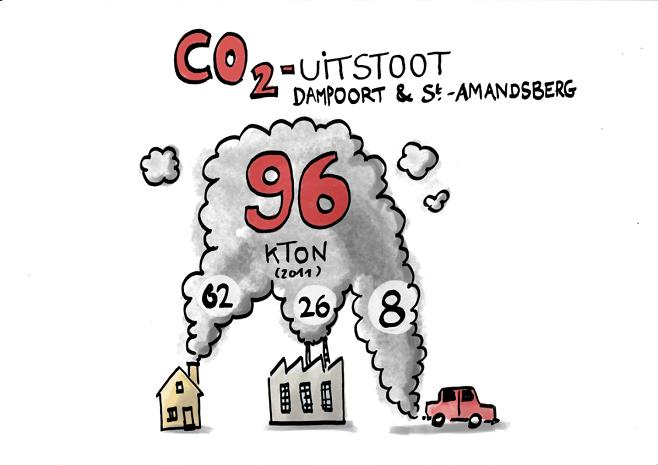
Visualisation of the CO2 emission of the district Dampoort Sint-Amandsberg (CO2-uitstoot = CO2 emissions)
To reduce emissions the main challenge lies in persuading residents to retrofit their houses. Ghent aims at doubling the retrofitting ratio in this district, which is a major challenge. In Flanders the majority of the houses are individually owned. Moreover, Dampoort Sint-Amandsberg is characterised by many different types of houses and different types of residents concerning origins, age and social class.
To avoid privacy issues the user data of individual houses were distributed over the district based on the age and type of building. Based on this data of the average energy consumption of different types of houses in the district, VITO and City of Ghent compiled a menu of eight energy reducing measures, as summarised in the image below - (HR glazing, new boiler, roof insulation, wall insulation, flat roof insulation, floor insulation, PV panels and/or solar boilers and heat pumps).
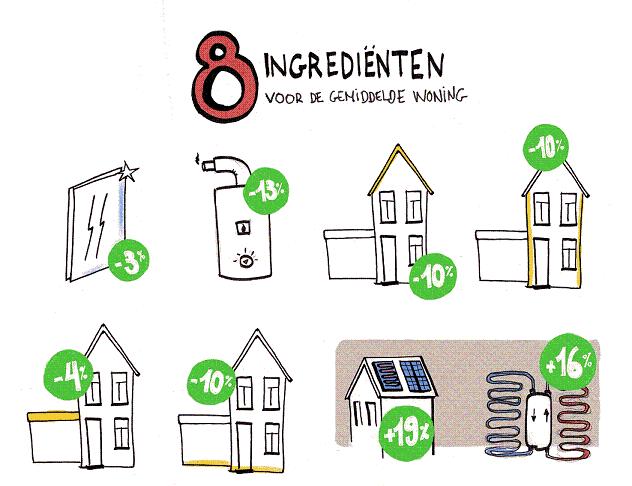
Eight ingredients for energy reduction in the average house in Dampoort Sint-Amandsberg
This set of measures can be adapted to every building. To inform and encourage residents the energy reduction of every measure was represented visually on a map of the district.
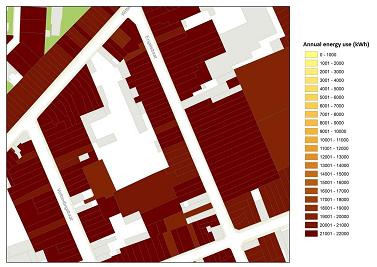 - Ghent before implementation measures.
- Ghent before implementation measures.
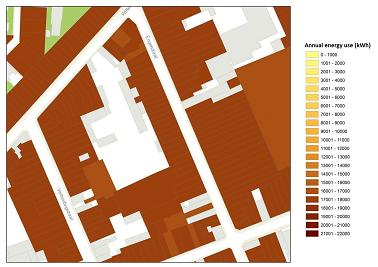 - Ghent after implementation measures.
- Ghent after implementation measures.
This energy mapping tool was used as a visual instrument to inform citizens about what climate neutrality of a district means and to encourage participation. In November 2013 a workshop on climate neutral housing was held with approximately 60 residents of Dampoort Sint-Amandsberg attending.
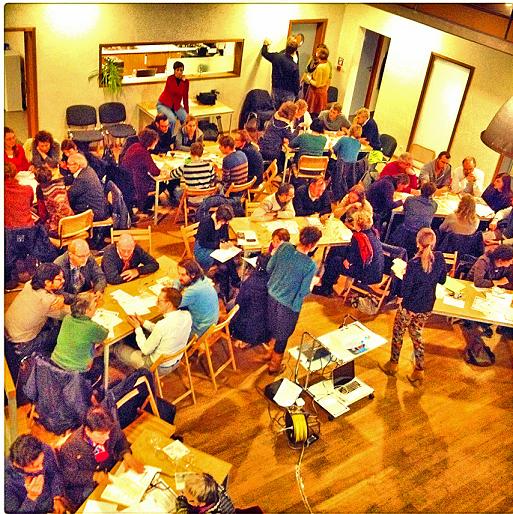
At this event Deputy Mayor Tine Heyse (Environment, Climate, Energy, Development) introduced the pilot project ‘Dampoort Sint-Amandsberg climate neutral district’ and called on citizens to join in. As a climate neutral district is a story of collaboration between the city and its citizens, it was set up as an interactive workshop with citizens raising ideas and discussing challenges and thresholds.
Issues like the relationship between landlords and tenants, engaging all layers of the population and financial and legal thresholds were discussed. Many creative ideas to tackle these challenges were formulated to collaborate towards a climate neutral district. A theme of collective-ness is running through these ideas: collective renovation, group purchases, a platform for exchanging knowledge and experiences amongst neighbours.
To stimulate bottom-up initiatives of this kind the city of Ghent will launch a subsidy for groups of neighbours collaborating in projects that reduce energy or CO2. This initiative will strengthen Ghent’s Climate Alliance. Under this label Ghent mobilises citizens, companies, local organisations, schools and policy makers to work together to achieve climate neutrality by 2050.
More information on the Ghent Climate Alliance can be found here